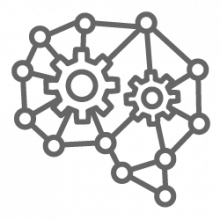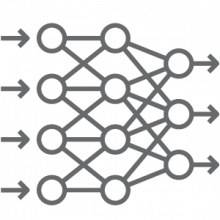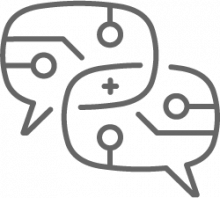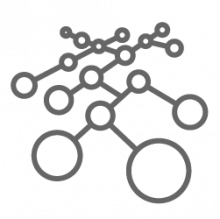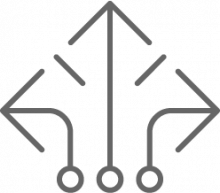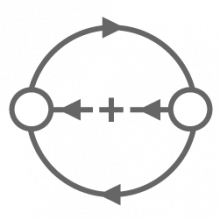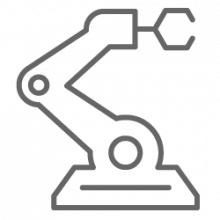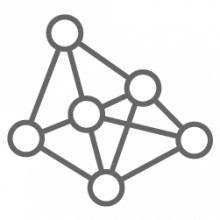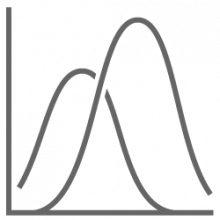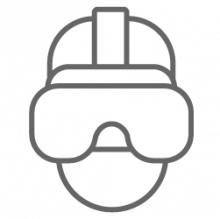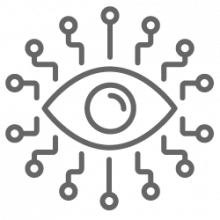Research
Machine learning spans a range of topical areas. The guide below can be used to identify labs, faculty, and scientists conducting research in each of these areas.
Active Learning
Prioritizing data labelling to optimize the training of supervised models
Bioinformatics
The science of collecting and analyzing complex biological data using computational methods
Computational Neuroscience
The development of mathematical tools and multi-scale models to investigate neural function
Deep Learning
Algorithms inspired by the structure and function of the brain referred to as artificial neural networks
Evolutionary Computation
The development of algorithms inspired by biological evolution to solve computational problems
Explainable AI
Frameworks to develop interpretable, high-confidence machine learning models
Graphical Models
The use of graphs to represent domain problems
Graphics & Visualization
Generating graphics with the aid of machine learning
Knowledge Representation
Encoding human reasoning into a symbolic language that can be processed by information systems
Large Scale Machine Learning
Machine learning systems that are able to process high-volume, open-ended data sets
Machine Learning Theory
The study of the theoretical and mathematical frameworks that underpin machine learning
Natural Language
A field that gives machines the ability to read, understand and derive meaning from human language
Networks
Developing efficient algorithms and systems to response to different network scenarios
Optimization
The study of methods to optimize the performance of machine learning models
Recommender Systems
The use of machine learning methods in a manner that seeks to predict user preferences
Reinforcement Learning
Enabling an agent to learn by trial and error using feedback from actions and experiences
Robotics
The study of devices that can move and react to sensory input
Signal Processing
Using computational models to make explicit information contained within a signal
Statistical Machine Learning
A framework for machine learning that draws from the field of statistics
Variational Inference
A machine learning method that enables computation of specific distributions through optimization
Virtual Reality
The simulation of the real world in a virtual environment
Vision
Training computers to interpret and understand digital images and videos
Wireless Communication
The transmission of information from one point to other without using a connecting physical medium
Artificial Intelligence Lab
The AI Lab, founded in 1983, investigates the central challenges of machine cognition, especially machine learning, knowledge representation and reasoning, and robotics.
Center for Big Data Analytics
The Center for Big Data Analytics (CBDA) at the University of Texas at Austin is an interdisciplinary research center focusing on large-scale data analysis.
Computational Visualization Center
The Computational Visualization Center develops and improves the core technologies for comprehensive computational modeling, simulation, analysis, and visualization of natural and synthetic phenomena, and then utilize them as an integrated tool for rapid discovery.
Computer Vision
Studies visual recognition and visual search. Recent and ongoing projects in the group consider large-scale image/video retrieval, unsupervised visual discovery, active learning, active recognition, first-person "egocentric" computer vision, interactive machine learning, image and video segmentation, activity recognition, vision and language, and video summarization.
Deep Learning
Research focus in computer vision, machine learning and computer graphics with an emphasis on deep learning, as well as image segmentation and understanding.
Graphics and AI
The intersections of Graphics and various fields in AI, including natural language processing, robotics, computer vision, and machine learning.
HuthLab
The HuthLab uses quantitative, computational methods to try to understand how the human brain processes the natural world. The lab is focused on understanding how the meaning of language is represented in the brain.
IDEAL Lab
IDEAL is primarily concerned with analyzing and mining complex data in various forms - including structured and semi-structured data, signal streams, images and videos - in order to characterize and understand the underlying phenomena and obtain actionable insights.
Learning Agents Research Group
Research in LARG aims to understand how to best create complete intelligent agents, and focuses on a number of areas such as machine learning, multiagent systems, and robotics.
Machine Learning
Machine learning research group studies adaptive computational systems that improve their performance with experience with a current focus on natural language learning.
Neural Networks
Neural Networks’ research concentrates on cognitive science, computational neuroscience, and evolutionary computation, including natural language processing, episodic memory, concept and schema learning, the visual cortex, and evolving neural networks in sequential decision tasks such as robotics, game playing, and resource optimization.
Personal Autonomous Robotics Lab
The goal of PEARL is to enable personal robots to be deployed in the home and workplace with minimal intervention by robotics experts. In settings such as these, robots do not operate in isolation, but have continual interactions with people and objects in the world. PEARL focuses on developing algorithms to solve problems that robot learners encounter in real-world interactive settings.
Virtual Reality Lab
The virtual reality lab examines two scientific problems: human vision and motor control. The vision research attempts to understand the function of vision in the context of daily tasks. The second direction of research that we are pursuing involves studying the characteristics of human motion.
Wireless Systems Innovation Laboratory
Research focus on wireless communications, signal processing, matrix analysis, and information theory. This lab is interested in solving theoretical problems that find applications in real systems.
Wireless Networking and Communications Group
The mission of the WNCG is to create a collaborative environment that supports research, provides highly relevant education and opportunities, promotes technical innovation, imagination and entrepreneurship in wireless networking, communications and data sciences.


